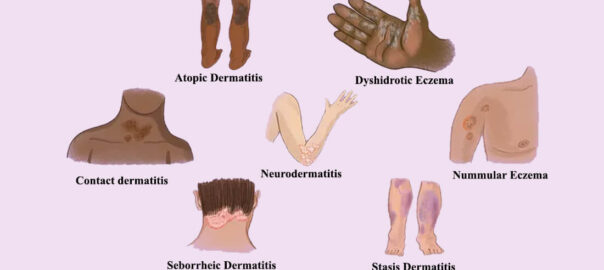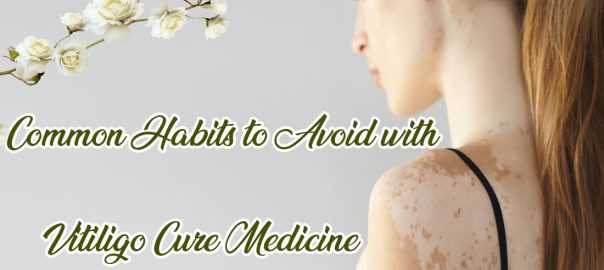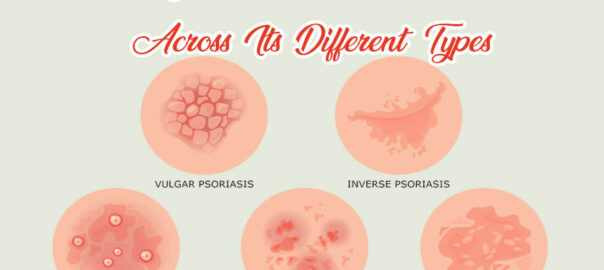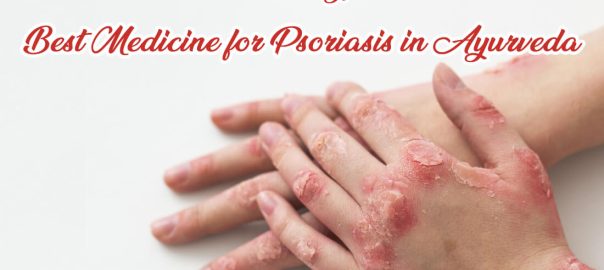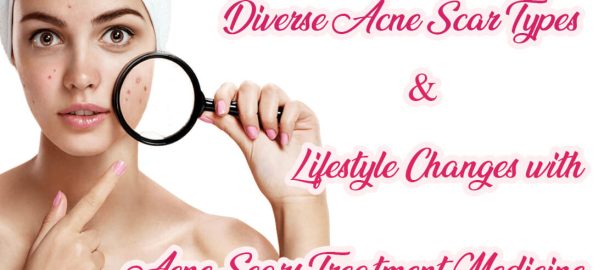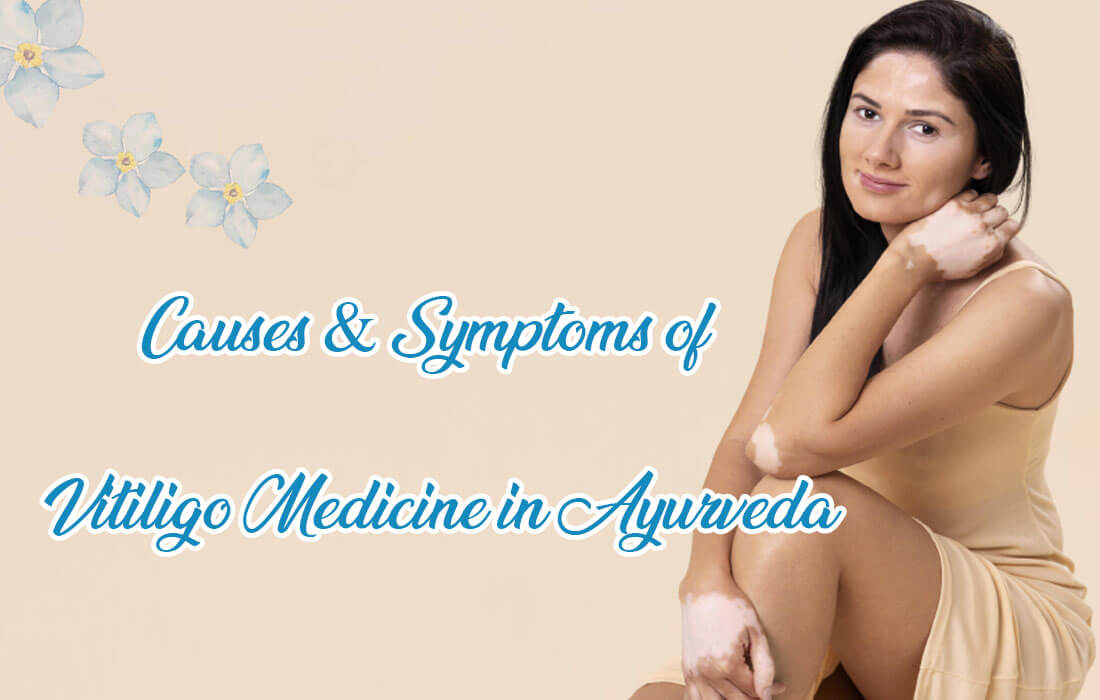
Vitiligo is a skin condition characterized by the loss of pigment, leading to the appearance of white patches on the skin. It can be frustrating and uncomfortable for those who suffer from it. While natural vitiligo medicine in ayurveda can help manage its symptoms, it is crucial to understand its causes and recognize its signs to seek appropriate treatment.
This blog post aims to provide information on what leads to vitiligo skin and how to recognize its symptoms. These are safe, easy to find, and have been shown to be effective in reducing the appearance of white patches on the skin.
Understanding Vitiligo Symptoms
Dealing with the symptoms of vitiligo can be a challenging experience. This skin condition causes patches of discoloured skin on the body, leading to noticeable differences in skin tone. The white patches that occur due to decreased melanin production can be particularly prominent, especially in individuals with darker skin tones. Furthermore, these white patches can exhibit variations in size and shape, which may be accompanied by changes in skin texture or an increased vulnerability to certain products.
It can affect people of any age, race, or gender, and the exact cause of the condition is still unknown. Available treatments aim to manage its symptoms and enhance the skin’s appearance. The best medicine to cure vitiligo will largely depend on the individual and the severity of their symptoms. With adequate care and guidance, people with vitiligo can effectively handle their symptoms and enjoy a fulfilling life.
Symptoms of Vitiligo
Vitiligo is a skin condition where specific areas of the skin lose their pigmentation, forming white or depigmented patches.
The symptoms of vitiligo can vary from person to person and may include:
1. White Patches:
When it comes to vitiligo, the primary symptom is the development of white or depigmented patches on the skin. These patches are usually well-defined and can occur anywhere on the body, but they are most commonly found in areas exposed to the sun, such as the face, hands, arms, feet, and lips.
2. Symmetrical Distribution:
In many cases, vitiligo patches appear on both sides of the body in a symmetrical pattern. For example, if a patch develops on one wrist, a similar patch may appear on the other side of the wrist.
3. Progressive Loss of Pigmentation:
Progressive loss of pigmentation refers to the gradual and ongoing skin depigmentation that occurs in conditions like vitiligo. In this process, melanocytes, the cells responsible for producing melanin, are gradually destroyed, forming white patches on the skin. This loss of pigmentation is often a lifelong challenge for those affected, as it can impact not only physical appearance but also emotional well-being due to the visible nature of the condition.
4. Change in Hair and Eye Color:
Besides its impact on the skin, vitiligo can also lead to reduced pigmentation in the hair and eyes. It may result in prematurely greying hair or a change in the colour of the irises.
5. Sensitivity to Sun:
The depigmented areas of the skin are more susceptible to sunburn because they lack the protective pigment melanin. People with vitiligo should take precautions to protect their skin from excessive sun exposure.
6. Koebner Phenomenon:
New vitiligo patches may sometimes develop at skin injury or trauma sites. It is known as the Koebner phenomenon and can occur as a response to cuts, burns, or other forms of skin trauma.
7. Psychological Impact:
While not a physical symptom, it’s important to note that vitiligo can have a significant emotional and psychological impact on individuals. Many people with vitiligo may experience feelings of self-consciousness, low self-esteem, and social stigma due to changes in their skin’s appearance.
Causes of Vitiligo
There are some potential causes of vitiligo, as follows:
1. Autoimmune Factors:
One prevailing theory suggests that vitiligo may have an autoimmune origin. In this situation, the immune system erroneously targets and eliminates melanocytes, the cells that produce melanin, the pigment responsible for colouring the skin, hair, and eyes.
2. Genetic Predisposition:
Genetic factors substantially impact the onset of vitiligo. People with a familial lineage of vitiligo have an increased likelihood of experiencing the condition themselves, highlighting a genetic predisposition.
3. Environmental Triggers:
Certain environmental factors may trigger or exacerbate vitiligo in individuals with a genetic predisposition. These factors can include chemical exposure, stress, trauma, and sunburn.
4. Neurological Factors:
Some researchers believe that neurological factors can contribute to vitiligo. These factors may include nerve damage or an imbalance in the neurotransmitters that regulate skin pigmentation.
5. Oxidative Stress:
Vitiligo development has been linked to the potential role of oxidative stress, wherein an imbalance exists between the production of harmful free radicals and the body’s capacity to counteract them.
It’s important to note that vitiligo is not contagious and cannot be transmitted from one person to another. While these factors may contribute to the development of vitiligo, the condition is complex and can vary from person to person.
Finally, it is important to remember that managing vitiligo symptoms requires a comprehensive approach. Using ayurvedic medicine for vitiligo and adopting healthy lifestyle habits can help alleviate the discomfort associated with this condition. It includes following a diet that is low in sugar, processed foods, and saturated fats and high in anti-inflammatory foods like fruits, vegetables, and whole grains. Incorporating regular exercise and stress-management practices such as yoga or meditation into their routine can enhance quality of life while decreasing the frequency and intensity of flare-ups.
Conclusion
Vitiligo is a complex skin disorder with various potential causes, and its symptoms can vary widely among individuals.
Incorporating vitiligo medicine in ayurveda into your daily regimen can help diminish the visibility of white patches on your skin and enhance your skin’s overall well-being. Ayurveda offers a holistic approach to managing vitiligo, focusing on herbal solutions, dietary modifications, and lifestyle changes.
However, it’s important to remember that managing vitiligo requires patience and consistency. With the right approach, you can find relief from this frustrating condition and feel more confident in your own skin.

